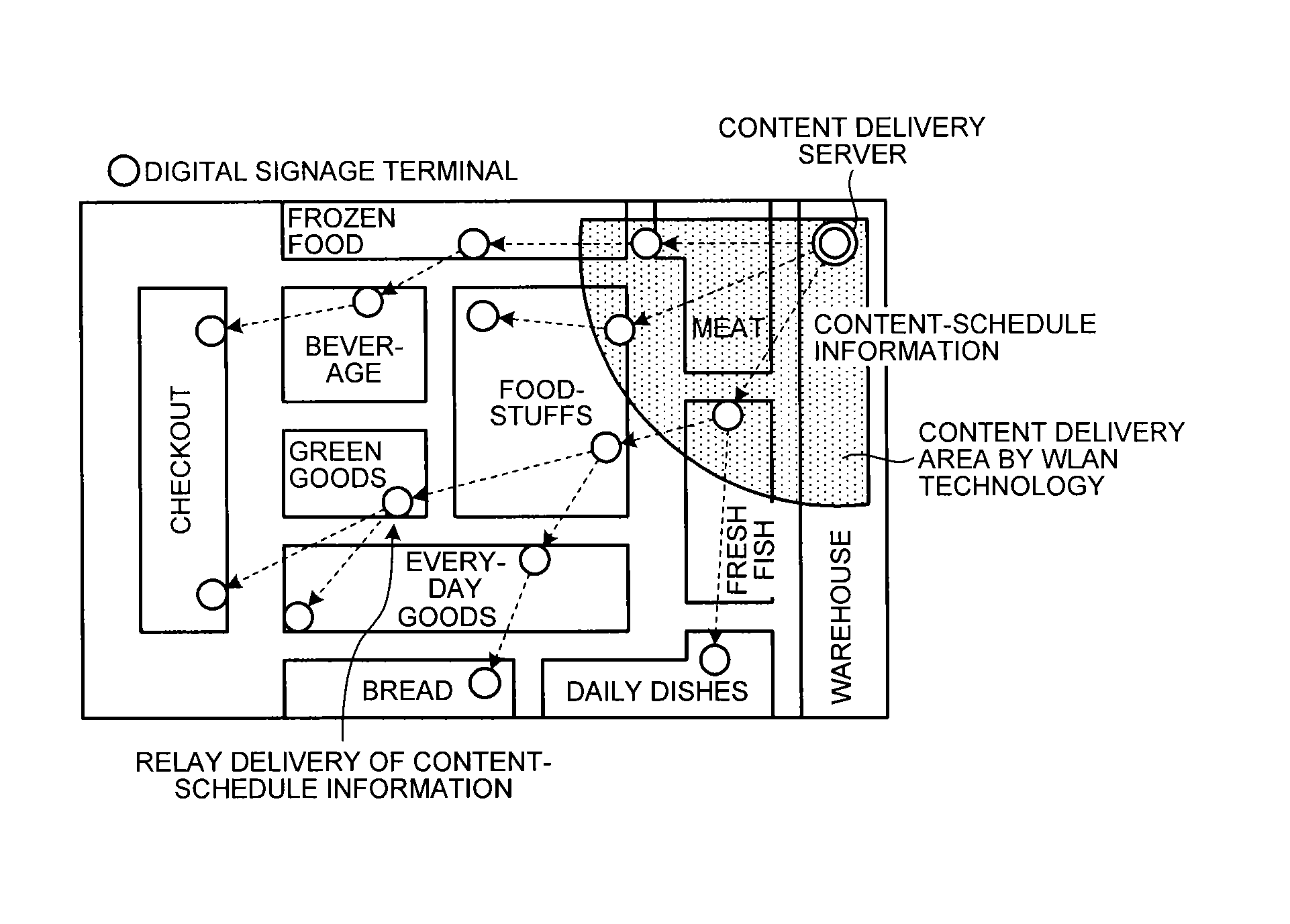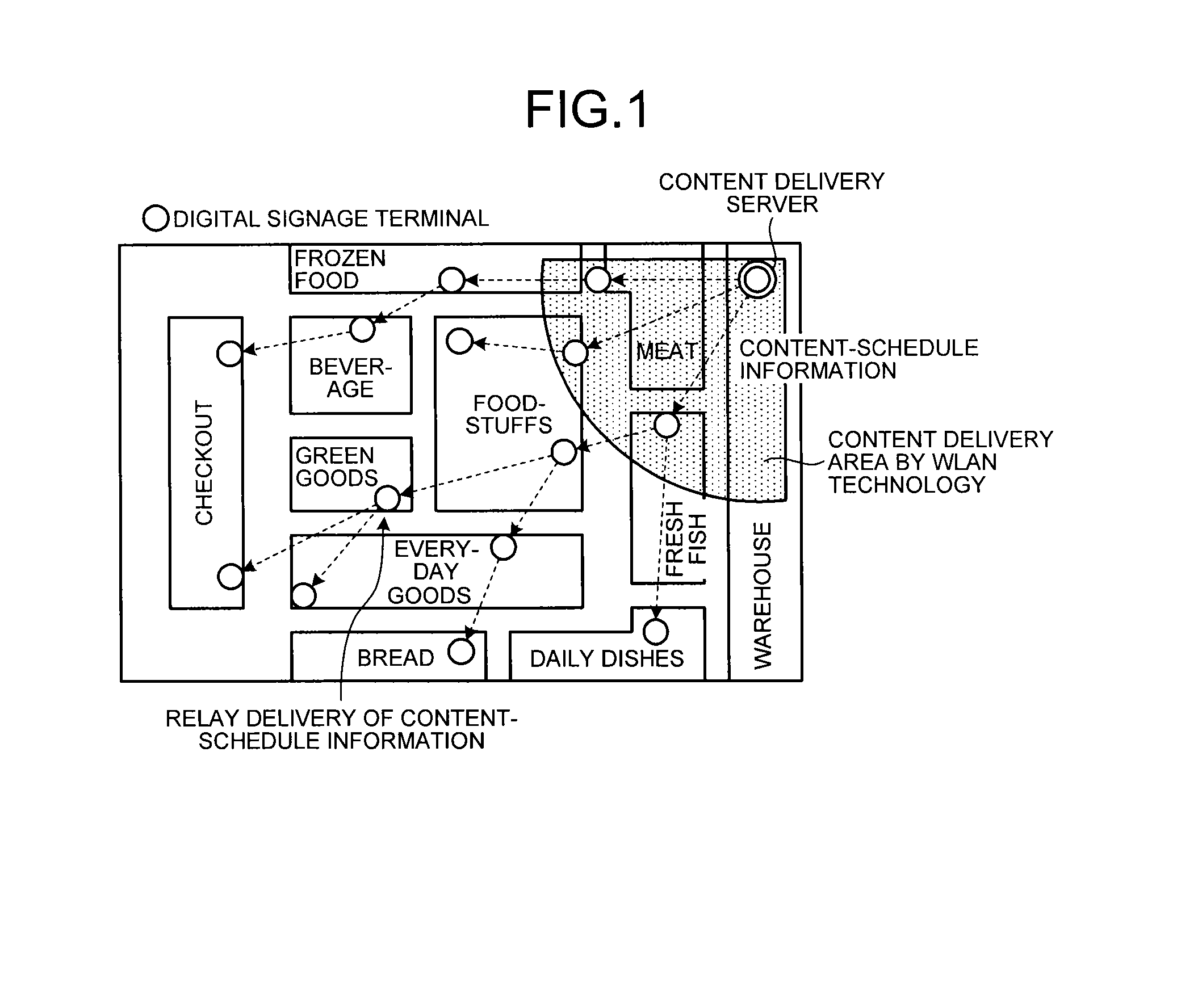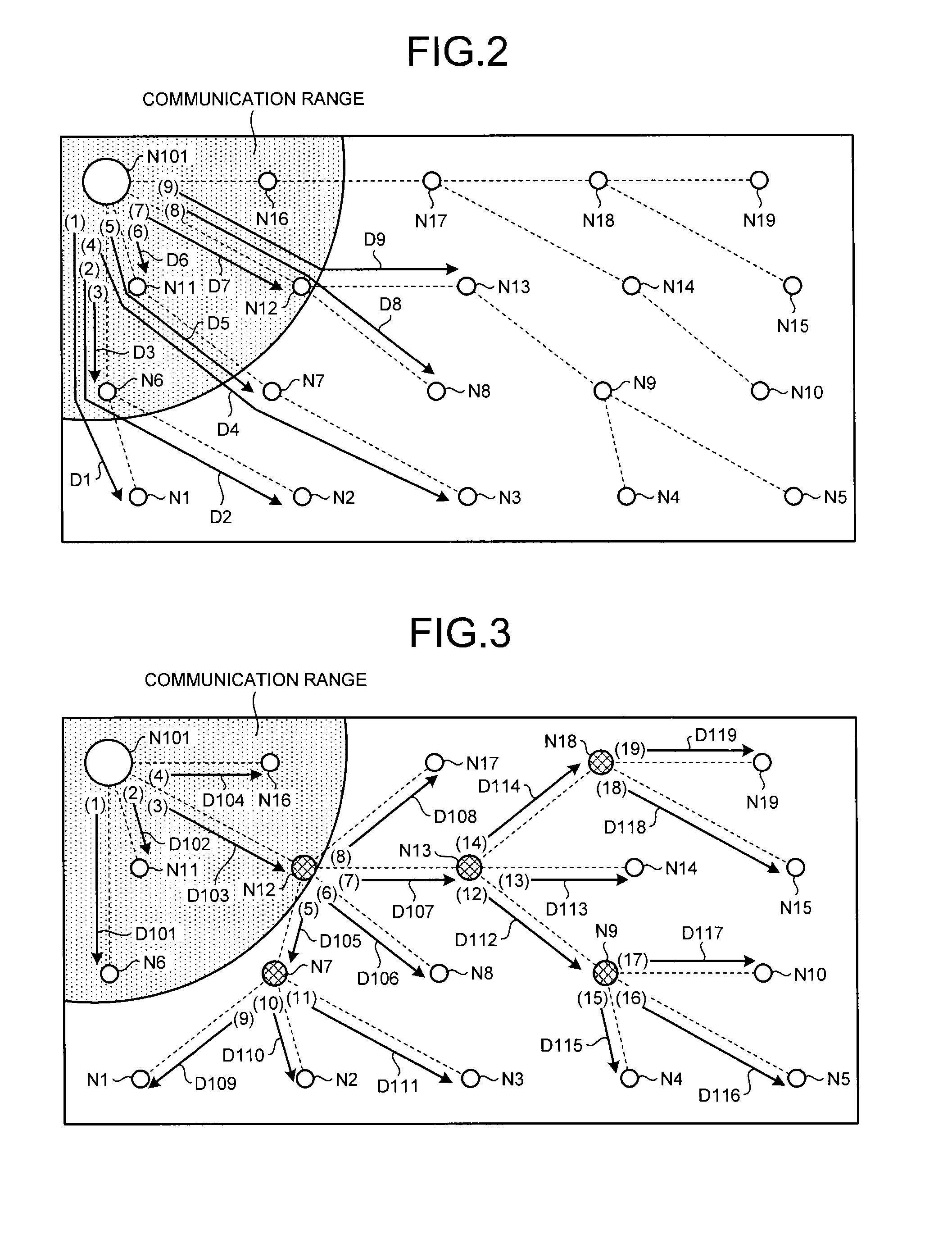Delivery server, and terminal device
- Summary
- Abstract
- Description
- Claims
- Application Information
AI Technical Summary
Benefits of technology
Problems solved by technology
Method used
Image
Examples
embodiment 1
[0021]First, a digital signage system which is a combination of conventional WLAN technology with multi-hop communication technology will be described briefly. FIG. 1 is a diagram showing a digital signage system which is a combination of WLAN technology with multi-hop communication technology. FIG. 1 is an image where digital signage terminals are installed in sales space in a retail store to perform advertisement, and shows that where digital signage terminals use WLAN technology, wherein terminals directly connect to an access point (a content delivery server in FIG. 1), digital signage terminals need to be installed within a fan-shaped range. By combining with multi-hop communication technology, installation in places where direct connection cannot be made is enabled, and merits such as communication continuation due to path redundancy or the like can be enjoyed. By using this connection configuration to deliver content and schedule to be displayed to each digital signage termin...
embodiment 2
[0046]In this embodiment, a server and terminals perform multicasting delivery. The differences from Embodiment 1 will be described.
[0047]FIG. 7 is a diagram showing communication paths in the content delivery system according to the present embodiment. A server N101 and terminals N1 to N19 have a transmit-receive function for multicasting communication. The type of multicasting communication may be communication simply using multicast addresses or communication wherein error correction by which the reception side can correct a frame error from multiple frames is carried out.
[0048]In the present embodiment, the server N101 and terminals N1 to N19 use multicasting delivery for a range where they can simultaneously transmit and receive by radio communication. At the time of multicasting delivery, the server N101 and terminals N1 to N19 set communication speed to match a terminal whose environment is the worst in order to select a common communication speed, and combine an error correc...
embodiment 3
[0065]In this embodiment, multiple terminals perform delivery processes at the same time. The differences from Embodiments 1, 2 will be described.
[0066]In Embodiments 1, 2, the server N101 manages terminals which perform delivery by radio communication such that one terminal delivers at a time, thus preventing interference by radio. However, if the space is known beforehand to be broad enough that radio waves do not interfere in the respective areas of, e.g., terminals N7 and N18 in FIG. 3, two or more terminals may perform delivery processes in parallel at the same time.
[0067]The server N101 finds out the amount of interference between the terminals in the network as well as managing network topology according to a routing protocol in advance of information delivery of content and schedule. When calculating the amount of interference, the server N101 may automatically generate a test signal or allow a user to enter manually. Further, the server N101 may perform calculation of recei...
PUM
 Login to View More
Login to View More Abstract
Description
Claims
Application Information
 Login to View More
Login to View More - R&D
- Intellectual Property
- Life Sciences
- Materials
- Tech Scout
- Unparalleled Data Quality
- Higher Quality Content
- 60% Fewer Hallucinations
Browse by: Latest US Patents, China's latest patents, Technical Efficacy Thesaurus, Application Domain, Technology Topic, Popular Technical Reports.
© 2025 PatSnap. All rights reserved.Legal|Privacy policy|Modern Slavery Act Transparency Statement|Sitemap|About US| Contact US: help@patsnap.com



